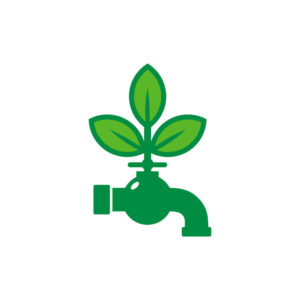 Did you know that up to 3% of our national electrical energy use is tied to the processing and movement of drinking water? Or that 20% of energy used in homes is simply for heating water? Green plumbing solutions are about more than just saving water; they’re about saving energy and the environment. There are literally dozens of things you can do to make your plumbing system ecologically sound and more economical for your family. Let’s take a look at a few of these options.
Did you know that up to 3% of our national electrical energy use is tied to the processing and movement of drinking water? Or that 20% of energy used in homes is simply for heating water? Green plumbing solutions are about more than just saving water; they’re about saving energy and the environment. There are literally dozens of things you can do to make your plumbing system ecologically sound and more economical for your family. Let’s take a look at a few of these options.
Pipes
If possible, route plumbing along interior walls to prevent heat from being siphoned off by cooler temperatures outside. Ensure that all pipes, regardless of location, are properly insulated. Losing heat through uninsulated pipes can increase your utility bills substantially. You can reduce your energy costs by switching to a green insulator instead. Consider organic cellulose, which is made primarily from recycled newspapers specially treated to make them fire-resistant. Another option is vegetable oil foam, which is made from plant-based oils and can be sprayed on wide areas. In some cases, people are utilizing recycled denim, since cotton is another natural and inexpensive insulator.
Toilets, Showers and Sinks
Low-flow toilets and faucets can reduce water use by 60% or more. Considering that an average toilet consumes nearly 30 gallons of water per person per day, this upgrade can eliminate a prime source of waste.
Low-flow aerators are devices that screw onto faucets and can reduce the flow by 40%. Installation time is just a few seconds and the price is generally under $10.
Low flow showerheads are similar to aerators—you can modify the rate of water flow without sacrificing pressure. There are several models on the market; look for those with non-aerating spray, which can shorten the time it takes for water to heat up and will save energy.
Motion sensor faucets are really popular in new commercial restroom construction. We’ve all used them—put your hand under the faucet and the water comes on; move your hand away and the water shuts off. There are now several models appropriate for residential use.
Washing Machines and Dishwashers
Appliances that use a lot of water such as dishwashers and washing machines are also available in more eco-friendly forms. Front-loading washers typically use less energy and water than their top-loading cousins. Dishwashers already use less water than handwashing and the latest models are designed to keep energy consumption to a minimum.
Water heaters
Old-fashioned water heaters were notorious for low efficiency and occasional problems with volume (“Who used up all the hot water!?”). If your water heater is older than 10 years, consider replacing it with a new, more efficient model. Modern storage tanks are far better in these respects but still suffer some heat loss and relatively high energy use. Here are a few solutions with new-and-improved technology:
- Tankless water heaters only heat water when it is required, rather than keeping a large volume hot constantly. This reduces the amount of wasted energy and water.
- Solar heaters use concentrated heat from the sun to keep water warm. Obviously most effective in climates with lots of sunshine, they may experience limitations in cloudier regions.
- Drain-water heat recovery systems are normally used in commercial applications with lots of waterflow. By trapping heat that would normally have gone down a drain, it can be used to offset the amount of energy used to raise the temperature of water in the storage tank.
Bieg Plumbing can install a new eco-friendly water heater that fits your needs. We can deliver and install it for you, or you can purchase one and hire us to install it.
If you are considering greening up your plumbing system, give Bieg Plumbing a call. We have been helping to keep water and the environment clean for 60 years.

